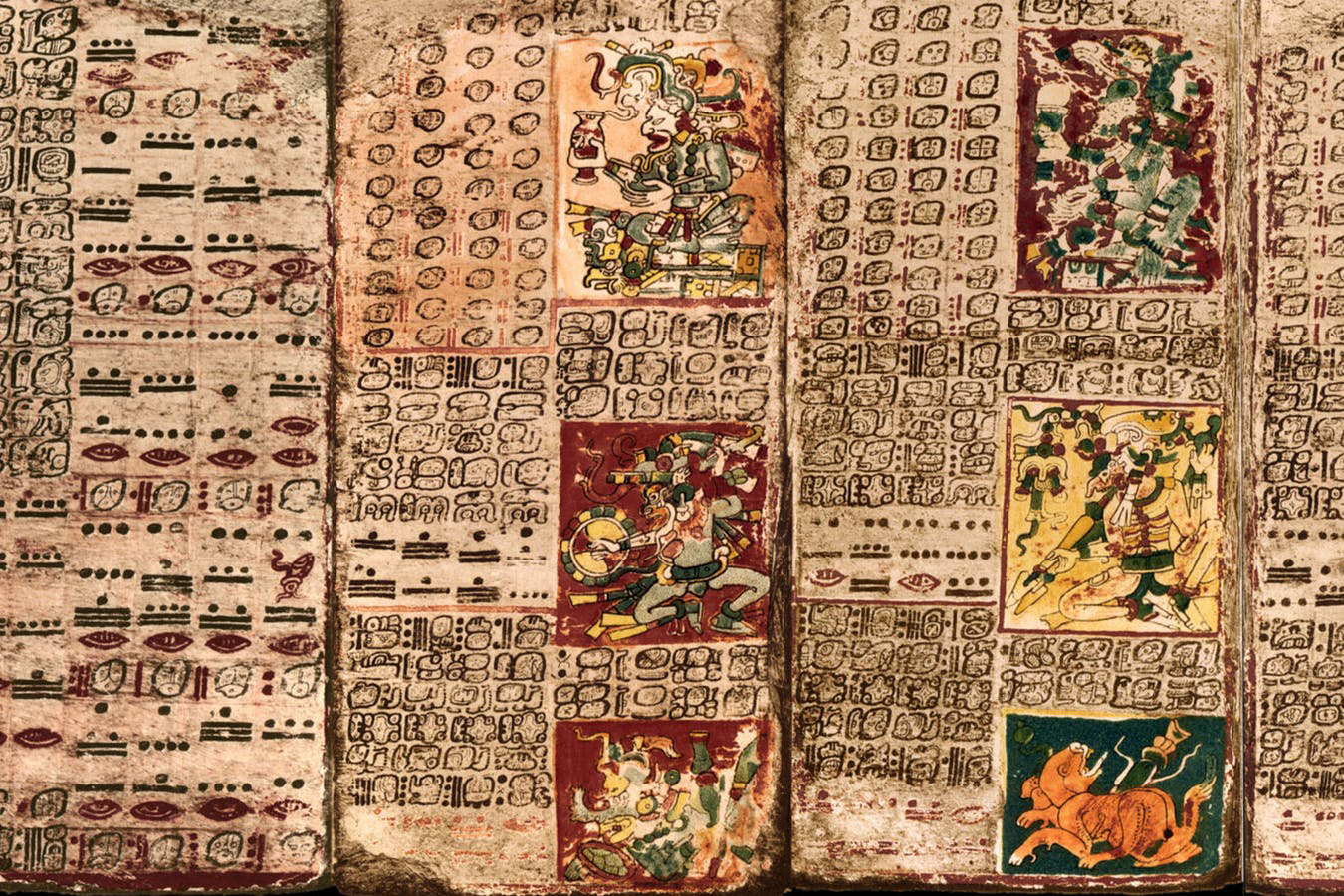
Proverbs 3:13 Happy is the one who finds wisdom, And the one who gains understanding; 14 For her proceeds are better than the profits of silver, And her gain than fine gold.
A common misconception about Native people is that our pre-contact civilization was primitive at best, lacking hallmarks of advanced (i.e., European) civilizations such as systems of writing, books, and universities. The truth is that early missionaries burned hundreds of Mayan books because the characters on the pages were not European and therefore were, by definition, devil worship. These books were called codexes, the same kind of book Europeans used when they first changed from scrolls to bound pages.
Diego de Landa, the first Catholic bishop to the Mayan people, recorded the event. “We found a large number of books in these characters and, as they contained nothing in which were not to be seen as superstition and lies of the devil, we burned them all, which they (the Maya) regretted to an amazing degree, and which caused them much affliction.”
Fortunately, de Landa also documented the Mayan language and writing system before he tried to destroy it. His work helps modern scholars to read some of the rarest books in the world. The picture above is one of those Mayan books that survived, making it one of the rarest books in the world. It is kept in a museum in Dresden Germany and so it is known as the Dresden Codex—but there is nothing German about it.
This book contains precise solar calculations as accurate as our own calendar today. It also contains calculations for the dates of solar eclipses. If this one book contains that much wisdom, just imagine how much knowledge was lost in that book burning back in 1562.
Nor were the Mayans the only Native scholars. Mi’kmac Indians had a form of hieroglyphic writing. When missionaries saw this they said it could not be real writing, but missionaries in the 1600s saw Mi’kmac children reading and writing on birch bark scrolls.
Ancient glyphs, while not a writing system like our own, are widespread through Turtle Island. They are records of historical events for those who know how to read them. Wampum belts use similar symbols and can be read by tribal members hundreds of years after the events they describe.
Solar, lunar, and astral events were tracked by almost all Native people. Sometimes they constructed observation towers, like the one at Hovenweep Utah, or Sun Daggers, like the one at Chaco Canyon New Mexico, to observe these celestial movements. Sometimes great mounds, pyramids, and temples were built to align with those same events. While no system of writing has come down to us from the mound builders or the cliff dwellers, these alignments would not have been possible without knowledge of mathematical formulae to predict and observe the heavens.
In the occupation of Turtle Island, the church had a sad history of discounting or destroying any evidence of Native American wisdom. However, those mistakes of the past do not define Christians or Natives today. As Christians we affirm that all truth is God’s truth, and all Wisdom is sent by the Holy Spirit. As Natives, we affirm that our forebears were more learned and wise than the world realized.
As you go through the medicine wheel of your life today, take time to ask yourself: are there people around me who have wisdom you need? Are there people you have ignored because you thought you had nothing to learn? A little wisdom is more precious than much gold. Ask God to reveal more wisdom to you today.
O Creator, we are quick to overlook those who have wisdom that differs from our own. Open our hearts to receive all wisdom that comes from you.
